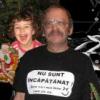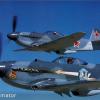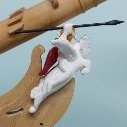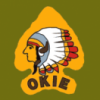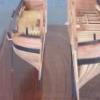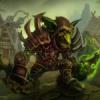-
Posts
885 -
Joined
-
Last visited
Reputation Activity
-
 Julie Mo got a reaction from cristikc in IF YOU HAD A CHOICE
Julie Mo got a reaction from cristikc in IF YOU HAD A CHOICE
Greg, if you already have a drill press, check this out. It's also sold at Stew-Mac, the same place that sells the 6" thin kerf circular saw blade. It's designed as a thickness sander and works pretty well. I'm finding a number of luthier tools cross over well into model making.
-
 Julie Mo got a reaction from src in IF YOU HAD A CHOICE
Julie Mo got a reaction from src in IF YOU HAD A CHOICE
Greg, if you already have a drill press, check this out. It's also sold at Stew-Mac, the same place that sells the 6" thin kerf circular saw blade. It's designed as a thickness sander and works pretty well. I'm finding a number of luthier tools cross over well into model making.
-
 Julie Mo reacted to KeithAug in Endeavour by KeithAug - FINISHED - Amati - Scale 1:35 - after 1989 restoration - J Class
Julie Mo reacted to KeithAug in Endeavour by KeithAug - FINISHED - Amati - Scale 1:35 - after 1989 restoration - J Class
Hi robnbill
It is still destined for my daughters flat - but we agreed it was better suited to an internal wall as it would be less vulnerable to accidental damage. I hadn't considered your point which is a good one.
Keith
-
 Julie Mo reacted to robnbill in Endeavour by KeithAug - FINISHED - Amati - Scale 1:35 - after 1989 restoration - J Class
Julie Mo reacted to robnbill in Endeavour by KeithAug - FINISHED - Amati - Scale 1:35 - after 1989 restoration - J Class
Very nice and your stand is ingenious and I think is well suited for the yachts period. If I remember your first log entry said this was destined for your daughters window. I think it will look great in the window. However, if there is no UV protection on the glass I am afraid the sun will do a number on your wood and colors.
-
 Julie Mo got a reaction from mrjimmy in Harbor Freight Mini Wood Planes
Julie Mo got a reaction from mrjimmy in Harbor Freight Mini Wood Planes
Toolaholic's confession: I bought a honing guide because I knew I needed it. But it didn't work out like I had hoped. Then I bought a better and, rather sophisticated, honing system. It worked great for plane irons and chisels that needed a lot of work. But using it was somewhat time consuming and I waited until my tools showed dulling before I took them to the "honing table".
Somewhere along the way, I learned it is better, and easier, to keep your tools well honed. All sharp tools dull with use. Take a few minutes to hone the edge before and after use. I rarely use guides anymore.
Rob Cosman does a great job explaining the free hand sharpening process. I don't use his angle tool. What I do is rock the primary bevel until it sits flush on the stone, then lift a bit for the secondary bevel.
-
 Julie Mo reacted to Richard Griffith in Spokeshave
Julie Mo reacted to Richard Griffith in Spokeshave
Like any hand tool, practice makes the master. I do not claim to be a master even though some colleagues and my admiral think so.
As David B stated above, you need a backer board, often with slots in it, either V shaped or square from a table saw cut. Leave the spar long so you can hold it without damaging the part. Then use a small hand plane and small spoke shaves to get the round shape. Finish with sanding devices.
I do use an electric drill and stationary belt sander sometimes but be careful not to build up any heat or your wood will bend out of shape.
My wood preferences are maple, Costello box, pear and cherry. Basswood is good but is soft and will easily dent and scratch.
Duff
-
 Julie Mo reacted to dgbot in Spokeshave
Julie Mo reacted to dgbot in Spokeshave
To provide a rigid backing for using a plane make a fixture with a 45⁰ slot and square it up. Then plane the edges to get 8 sides then round it up with sandpaper. Using a drill for doing everything may seem faster but you may impart a twist in the yard that will come back to haunt you down the road.
David B
-
 Julie Mo reacted to michael mott in IF YOU HAD A CHOICE
Julie Mo reacted to michael mott in IF YOU HAD A CHOICE
Greg, Noting that you have been doing woodwork for 30 years, and your question regarding a sled, I think that the sled is a very useful device they can be made quickly from a variety of thicknesses of either good quality aircraft ply or MDF the sled does not need to have more than one long guide either to the side as the fence or underneath to fit the standard slot in the table.
As Julie noted there are smaller blades that fit onto the full sized table saws and with zero clearance slot you have the power needed to cut through most materials. I in fact prefer the stability of my old unisaw with a small blade 6 1/4" or 7 1/4" these are inexpensive and quite adaptable.
Regarding the other power tools My personal preference has been a bandsaw and a drill press, Although I am also very fond of my jewelers saws.
Michael
-
 Julie Mo got a reaction from thibaultron in IF YOU HAD A CHOICE
Julie Mo got a reaction from thibaultron in IF YOU HAD A CHOICE
I have a saw blade that fits on a standard table saw and makes cuts that could work well for certain aspects of model making. It's a 6" diameter blade with 100 teeth and a .023" kerf. It cuts to about 1/2" deep.
I made a sled for my 10" table saw to cut fret slots. In order to create a zero clearance on the top of the sled, I had to first cut a wider slot to accommodate the wider thickness of the blade about 1/2" in from the perimeter.
Remove the fretboard holder (blue extrusion assembly) and insert whatever you need to make your fine cuts.
I have thought about using this blade to make rip cuts in thin sheets of wood. If I did that, the first thing I would do is make a zero clearance table saw insert specifically for this blade. Even though the blade is designed to be a crosscut blade, I can see it working in woods that are the thickness of model ship planking.
-
 Julie Mo got a reaction from Jack12477 in IF YOU HAD A CHOICE
Julie Mo got a reaction from Jack12477 in IF YOU HAD A CHOICE
I have a saw blade that fits on a standard table saw and makes cuts that could work well for certain aspects of model making. It's a 6" diameter blade with 100 teeth and a .023" kerf. It cuts to about 1/2" deep.
I made a sled for my 10" table saw to cut fret slots. In order to create a zero clearance on the top of the sled, I had to first cut a wider slot to accommodate the wider thickness of the blade about 1/2" in from the perimeter.
Remove the fretboard holder (blue extrusion assembly) and insert whatever you need to make your fine cuts.
I have thought about using this blade to make rip cuts in thin sheets of wood. If I did that, the first thing I would do is make a zero clearance table saw insert specifically for this blade. Even though the blade is designed to be a crosscut blade, I can see it working in woods that are the thickness of model ship planking.
-
 Julie Mo got a reaction from aviaamator in Spokeshave
Julie Mo got a reaction from aviaamator in Spokeshave
I have used spokeshaves for shaping guitar necks. I love working with them. Years ago I bought a couple of Record spokeshaves and hated them. When I got into making guitar necks, I bit the bullet and bought a set of L-N Boggs spokeshaves and never looked back.
Flat & curved soles
I can achieve a pretty straight cut with the spokeshave but for the final shaping I have several sanding blocks I made out of MDF to which I attach PSA sandpaper. These sanding blocks from 3" to 18" long. It takes time to get the final shape right and I use templates to check at different locations on the back of the neck as I do the shaping.
When it comes to using spokeshaves on a mast for a model boat, I do not see it as the best tool. As Michael mentioned, a small block plane would work better. The problem with using a spokeshave on something as small as a model mast comes in the flexibility of the wood. You would need a rigid backer to keep it straight and ensure even shavings. When I make guitar necks, flex is not a problem.
I plan on creating a mast with an oval shape. I will start with a small block plane and finish with long sanding blocks. I will make templates to check the shape as I work. There may be an easier way, short of CNC, but I don't know what that would be.
-
 Julie Mo reacted to barryww in Harbor Freight Mini Wood Planes
Julie Mo reacted to barryww in Harbor Freight Mini Wood Planes
I just ordered some of the Harbor Freight planes to try out. For the price, I haven't really lost anything if they don't past muster. I always use the Scary Sharp method for honing chisels using finer and finer grades of emery cloth. An easy cheap method for honing that gets me a really sharp blade.
-
 Julie Mo got a reaction from AON in Harbor Freight Mini Wood Planes
Julie Mo got a reaction from AON in Harbor Freight Mini Wood Planes
Toolaholic's confession: I bought a honing guide because I knew I needed it. But it didn't work out like I had hoped. Then I bought a better and, rather sophisticated, honing system. It worked great for plane irons and chisels that needed a lot of work. But using it was somewhat time consuming and I waited until my tools showed dulling before I took them to the "honing table".
Somewhere along the way, I learned it is better, and easier, to keep your tools well honed. All sharp tools dull with use. Take a few minutes to hone the edge before and after use. I rarely use guides anymore.
Rob Cosman does a great job explaining the free hand sharpening process. I don't use his angle tool. What I do is rock the primary bevel until it sits flush on the stone, then lift a bit for the secondary bevel.
-
 Julie Mo got a reaction from barryww in Harbor Freight Mini Wood Planes
Julie Mo got a reaction from barryww in Harbor Freight Mini Wood Planes
Toolaholic's confession: I bought a honing guide because I knew I needed it. But it didn't work out like I had hoped. Then I bought a better and, rather sophisticated, honing system. It worked great for plane irons and chisels that needed a lot of work. But using it was somewhat time consuming and I waited until my tools showed dulling before I took them to the "honing table".
Somewhere along the way, I learned it is better, and easier, to keep your tools well honed. All sharp tools dull with use. Take a few minutes to hone the edge before and after use. I rarely use guides anymore.
Rob Cosman does a great job explaining the free hand sharpening process. I don't use his angle tool. What I do is rock the primary bevel until it sits flush on the stone, then lift a bit for the secondary bevel.
-
 Julie Mo got a reaction from Retired guy in Endeavour 1934 by Julie Mo - Amati - Scale 1:35 - America's Cup UK J-Class Challenger
Julie Mo got a reaction from Retired guy in Endeavour 1934 by Julie Mo - Amati - Scale 1:35 - America's Cup UK J-Class Challenger
The biggest obstacle thus far has been a balsa shortage. I have been spending more time thinking than doing. The piece that arrived Saturday was quickly used up. It doesn't look like any progress at all.
-
 Julie Mo got a reaction from Canute in Harbor Freight Mini Wood Planes
Julie Mo got a reaction from Canute in Harbor Freight Mini Wood Planes
Toolaholic's confession: I bought a honing guide because I knew I needed it. But it didn't work out like I had hoped. Then I bought a better and, rather sophisticated, honing system. It worked great for plane irons and chisels that needed a lot of work. But using it was somewhat time consuming and I waited until my tools showed dulling before I took them to the "honing table".
Somewhere along the way, I learned it is better, and easier, to keep your tools well honed. All sharp tools dull with use. Take a few minutes to hone the edge before and after use. I rarely use guides anymore.
Rob Cosman does a great job explaining the free hand sharpening process. I don't use his angle tool. What I do is rock the primary bevel until it sits flush on the stone, then lift a bit for the secondary bevel.
-
 Julie Mo got a reaction from dgbot in Harbor Freight Mini Wood Planes
Julie Mo got a reaction from dgbot in Harbor Freight Mini Wood Planes
Toolaholic's confession: I bought a honing guide because I knew I needed it. But it didn't work out like I had hoped. Then I bought a better and, rather sophisticated, honing system. It worked great for plane irons and chisels that needed a lot of work. But using it was somewhat time consuming and I waited until my tools showed dulling before I took them to the "honing table".
Somewhere along the way, I learned it is better, and easier, to keep your tools well honed. All sharp tools dull with use. Take a few minutes to hone the edge before and after use. I rarely use guides anymore.
Rob Cosman does a great job explaining the free hand sharpening process. I don't use his angle tool. What I do is rock the primary bevel until it sits flush on the stone, then lift a bit for the secondary bevel.
-
 Julie Mo got a reaction from Eddie in Endeavour 1934 by Julie Mo - Amati - Scale 1:35 - America's Cup UK J-Class Challenger
Julie Mo got a reaction from Eddie in Endeavour 1934 by Julie Mo - Amati - Scale 1:35 - America's Cup UK J-Class Challenger
The biggest obstacle thus far has been a balsa shortage. I have been spending more time thinking than doing. The piece that arrived Saturday was quickly used up. It doesn't look like any progress at all.
-
 Julie Mo got a reaction from Fangs in Endeavour 1934 by Julie Mo - Amati - Scale 1:35 - America's Cup UK J-Class Challenger
Julie Mo got a reaction from Fangs in Endeavour 1934 by Julie Mo - Amati - Scale 1:35 - America's Cup UK J-Class Challenger
The biggest obstacle thus far has been a balsa shortage. I have been spending more time thinking than doing. The piece that arrived Saturday was quickly used up. It doesn't look like any progress at all.
-
 Julie Mo got a reaction from popeye the sailor in Endeavour 1934 by Julie Mo - Amati - Scale 1:35 - America's Cup UK J-Class Challenger
Julie Mo got a reaction from popeye the sailor in Endeavour 1934 by Julie Mo - Amati - Scale 1:35 - America's Cup UK J-Class Challenger
The biggest obstacle thus far has been a balsa shortage. I have been spending more time thinking than doing. The piece that arrived Saturday was quickly used up. It doesn't look like any progress at all.
-
 Julie Mo got a reaction from michael mott in Spokeshave
Julie Mo got a reaction from michael mott in Spokeshave
I have used spokeshaves for shaping guitar necks. I love working with them. Years ago I bought a couple of Record spokeshaves and hated them. When I got into making guitar necks, I bit the bullet and bought a set of L-N Boggs spokeshaves and never looked back.
Flat & curved soles
I can achieve a pretty straight cut with the spokeshave but for the final shaping I have several sanding blocks I made out of MDF to which I attach PSA sandpaper. These sanding blocks from 3" to 18" long. It takes time to get the final shape right and I use templates to check at different locations on the back of the neck as I do the shaping.
When it comes to using spokeshaves on a mast for a model boat, I do not see it as the best tool. As Michael mentioned, a small block plane would work better. The problem with using a spokeshave on something as small as a model mast comes in the flexibility of the wood. You would need a rigid backer to keep it straight and ensure even shavings. When I make guitar necks, flex is not a problem.
I plan on creating a mast with an oval shape. I will start with a small block plane and finish with long sanding blocks. I will make templates to check the shape as I work. There may be an easier way, short of CNC, but I don't know what that would be.
-
 Julie Mo got a reaction from michael mott in IF YOU HAD A CHOICE
Julie Mo got a reaction from michael mott in IF YOU HAD A CHOICE
I have a saw blade that fits on a standard table saw and makes cuts that could work well for certain aspects of model making. It's a 6" diameter blade with 100 teeth and a .023" kerf. It cuts to about 1/2" deep.
I made a sled for my 10" table saw to cut fret slots. In order to create a zero clearance on the top of the sled, I had to first cut a wider slot to accommodate the wider thickness of the blade about 1/2" in from the perimeter.
Remove the fretboard holder (blue extrusion assembly) and insert whatever you need to make your fine cuts.
I have thought about using this blade to make rip cuts in thin sheets of wood. If I did that, the first thing I would do is make a zero clearance table saw insert specifically for this blade. Even though the blade is designed to be a crosscut blade, I can see it working in woods that are the thickness of model ship planking.
-
 Julie Mo got a reaction from mtaylor in IF YOU HAD A CHOICE
Julie Mo got a reaction from mtaylor in IF YOU HAD A CHOICE
I have a saw blade that fits on a standard table saw and makes cuts that could work well for certain aspects of model making. It's a 6" diameter blade with 100 teeth and a .023" kerf. It cuts to about 1/2" deep.
I made a sled for my 10" table saw to cut fret slots. In order to create a zero clearance on the top of the sled, I had to first cut a wider slot to accommodate the wider thickness of the blade about 1/2" in from the perimeter.
Remove the fretboard holder (blue extrusion assembly) and insert whatever you need to make your fine cuts.
I have thought about using this blade to make rip cuts in thin sheets of wood. If I did that, the first thing I would do is make a zero clearance table saw insert specifically for this blade. Even though the blade is designed to be a crosscut blade, I can see it working in woods that are the thickness of model ship planking.
-
 Julie Mo got a reaction from mtaylor in Spokeshave
Julie Mo got a reaction from mtaylor in Spokeshave
I have used spokeshaves for shaping guitar necks. I love working with them. Years ago I bought a couple of Record spokeshaves and hated them. When I got into making guitar necks, I bit the bullet and bought a set of L-N Boggs spokeshaves and never looked back.
Flat & curved soles
I can achieve a pretty straight cut with the spokeshave but for the final shaping I have several sanding blocks I made out of MDF to which I attach PSA sandpaper. These sanding blocks from 3" to 18" long. It takes time to get the final shape right and I use templates to check at different locations on the back of the neck as I do the shaping.
When it comes to using spokeshaves on a mast for a model boat, I do not see it as the best tool. As Michael mentioned, a small block plane would work better. The problem with using a spokeshave on something as small as a model mast comes in the flexibility of the wood. You would need a rigid backer to keep it straight and ensure even shavings. When I make guitar necks, flex is not a problem.
I plan on creating a mast with an oval shape. I will start with a small block plane and finish with long sanding blocks. I will make templates to check the shape as I work. There may be an easier way, short of CNC, but I don't know what that would be.
-
 Julie Mo got a reaction from Canute in Endeavour 1934 by Julie Mo - Amati - Scale 1:35 - America's Cup UK J-Class Challenger
Julie Mo got a reaction from Canute in Endeavour 1934 by Julie Mo - Amati - Scale 1:35 - America's Cup UK J-Class Challenger
The biggest obstacle thus far has been a balsa shortage. I have been spending more time thinking than doing. The piece that arrived Saturday was quickly used up. It doesn't look like any progress at all.



